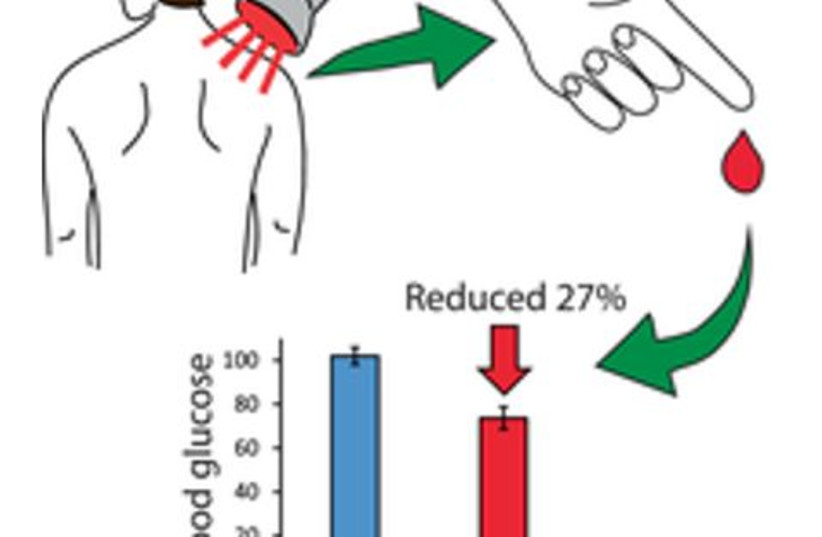Patients with type-two diabetes are eager to find successful ways to reduce their blood sugar and control their metabolic disease.
Now, UK researchers have found that 670 nanometers of red light on the backs of healthy individuals stimulated energy production within mitochondria – the tiny powerhouses within cells – leading to increased consumption of glucose.
In particular, it led to a 27.7% reduction in blood glucose levels following glucose intake and reduced maximum glucose spiking by 7.5%.
While the study was conducted in healthy people, the non-invasive, non-pharmacological technique has the potential to have an impact on diabetes control after meals, as it can reduce damaging fluctuations of blood glucose in the body that contribute to aging, they said.
Significant long-term consequences for health
The study also highlights the significant long-term consequences for human health, including the potential dysregulation of blood sugars posed by lengthy exposure to blue light. The research has been published in the Journal of Biophotonics under the title “Light stimulation of mitochondria reduces blood glucose levels.”

“Sunlight has a balance between red and blue, but we now live in a world where blue light is dominant because although we do not see it, LED lights are dominant in blue and have almost no red in them.
This reduces mitochondrial function and ATP production, so our internal environments are red-starved. Long-term exposure to blue light is potentially toxic without red. Blue light on its own impacts badly on physiology and can drive disrupted blood sugars that may, in the long run, contribute to diabetes and undermine health spans. the authors suggest that this may be a potential public health issue.
“Pre-1990, we all had incandescent lighting, which was fine because it had the balance of blue and red similar to sunlight, but there is a potential health span time bomb in the change to LEDs in an aging population. This can partly be corrected by spending more time in sunlight,” they added.
Mitochondria – membrane-bound cell organelles that generate most of the chemical energy needed to power the cell's biochemical reactions – provide energy for vital processes in the cells, using oxygen and glucose to produce the energy-rich nucleoside adenosine triphosphate (ATP).
Previous research has established that long-wavelength light between 650 to 900 nanometers (spanning the visible through to the near-infrared range) can increase mitochondrial production of ATP that reduces blood glucose and also improves health/lifespan in animals.
The authors, the University of London Prof. Michael Powner of the Optometry and Visual Science department and University College London ophthalmology Prof. Glen Jeffery, suggest that this improvement in ATP production can cause signaling changes that are transmitted throughout the body.
While mitochondria regulate metabolism, solar light influences its rate. Photobiomodulation with red light increases mitochondrial membrane potentials and adenosine triphosphate production and could increase glucose demand, they said.
“Here we show, with a glucose tolerance test, that photobiomodulation of normal subjects significantly reduces blood sugar levels. A 15-minute exposure to 670 nm light reduced the degree of blood glucose elevation following glucose intake by 27.7%, integrated over 2 hours after the glucose challenge.
This intervention could reduce damaging fluctuations of blood glucose in the body.
